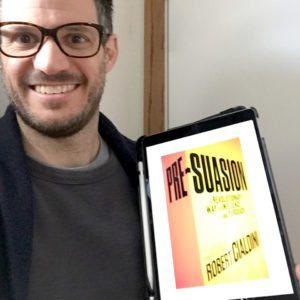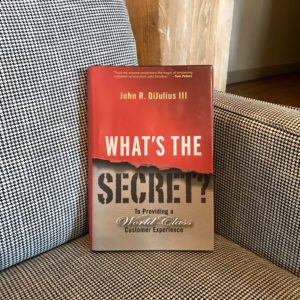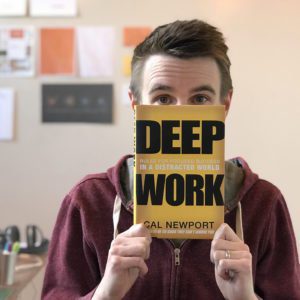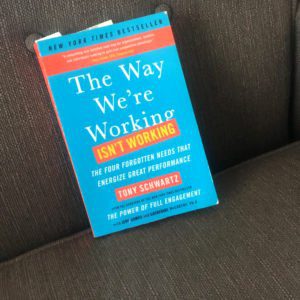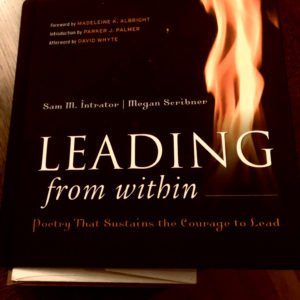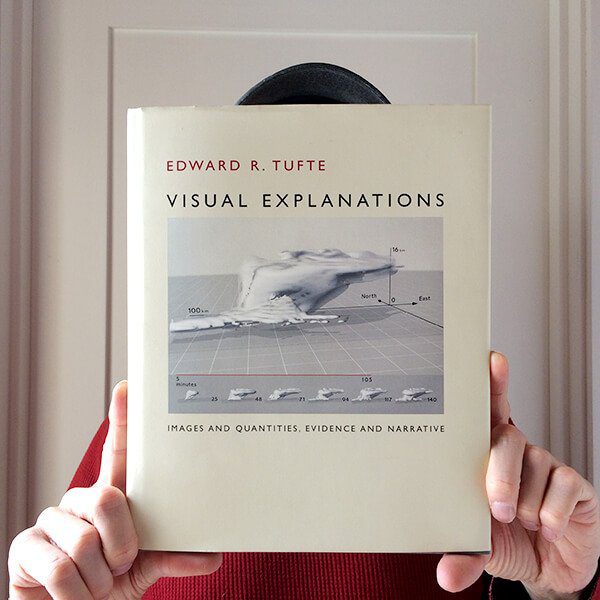Good Reads from 2017
One of the great parts about being on the MJM team is passing around books, ideas and resources (but mostly books). We often share with our clients and get great recommendations from them, too. Earlier this year, we read Shape of Design by Frank Shapiro as a team and discussed it chapter by chapter on morning calls. Recently, we have revisited some of John R. DiJulius’ books about the experience economy. He came to Sioux Falls in March and many of our team had the pleasure of hearing his stories first-hand.
On design, business, work or life, the books around us help make us better. These are some of the good ones we enjoyed in 2017:
Pre-Suasion
by Robert Cialdini
It’s a thoughtful and researched-based approach to anyone who wants to effectively and ethically persuade others before the discussion even begins. (Justin Mootz)
What’s the Secret? To Providing a World-Class Customer Experience
John R. DiJulius III
I often reference John’s sequel to Secret Service since its 2008 release. It is still as relevant today. The list of “10 Non-Negotiables to a World Class Customer Service Organization” is reason enough to buy it. (Cindy Haskell)
The Innovator’s DNA
by Jeffrey Dyer, Hal B. Gregersen, and Clayton M. Christensen
The Innovator’s DNA is an exploration of the qualities that created historic individuals that disrupted their respective markets like Jeff Bezos and Steve Jobs. This book’s theory on discovery and delivery time allotment was a great takeaway and has been a helpful consideration in honing my own time management skills. I’d recommend this book to any designer or aspiring entrepreneur. (Joel Jochim)
What is the What
by Dave Eggers
What is the What is a testimony to the extraordinary power of storytelling.
“Whatever I do, however I find a way to live, I will tell these stories… I speak to you because I cannot help it. It gives me strength, almost unbelievable strength, to know that you are there… I am alive and you are alive so we must fill the air with our words. I will fill today, tomorrow, every day until I am taken back to God. I will tell stories to people who will listen and to people who don’t want to listen, to people who seek me out and to those who run. All the while I will know that you are there. How can I pretend that you do not exist? It would be almost as impossible as you pretending that I do not exist.” (Shannan Anderson)
Transfer of Power
by Vince Flynn
The way Flynn writes and is unbelievable. You can picture it and you feel like you’re right in the thick of the story. It would be a hard picture to paint. Action-packed and detail is incredible. (Katherine Kirby)
Look
by James Gilmore
In a culture where everything is “right now,” and “I want just what I want when I want it the way I want it” we have lost our skill of noticing or paying attention. We don’t think we should have to pay for anything, especially attention. (Matt Jensen)
Bird by Bird: Some Instructions on Writing and Life
by Anne Lamott
I rarely reread books, but this is one that I always find myself returning to for the excellent writing, candid advice and blunt humor. Like the title says, it’s not just tips about writing, but really any creative endeavor, including life itself. Whenever I find myself stuck or overwhelmed, I just remind myself to take it “bird by bird.” (Kirstie Wollman)
Thinking With Type
by Ellen Lupton
On my search for a resource for learning about grids, Brady suggested Thinking with Type to me. Both a reference tool about type and layout design and a good read, Thinking with Type is one of the most comprehensive yet enjoyable design resources I’ve found. It covers three sections: Letter, Type and Grid. For added color, Lupton sprinkles in design and type history and calls out common “Type Crimes.”
The Four Agreements: A Practical Guide to Personal Freedom
by Don Miguel Ruiz
I try to read this book every year to refocus on accountability for myself, my emotions, and my reactions. It helps me keep in mind what is in my control and what is out of my control and I find that I am much more at peace when I keep the agreements at top of mind. (Katie Hughes)
Deep Work
by Cal Newport
A very empowering study on one’s ability to focus and do meaningful work without distraction and why that ability is more rare and more valuable than ever before. It’s rich with both anecdotal evidence and application of scientific studies. The first half of the book explains just what Deep Work is and the case for why you should pursue it. The second half delivers four practical “rules” for actually cultivating it.
As a “creative” and a knowledge worker I found tremendous value considering Deep Work in relation to the creative process and to the concept of Flow. (Brady Holm)
Haroun and the Sea of Stories
by Salman Rushdie
For those that believe storytelling is central to how humans interact with the world, Haroun guides us into an imaginative tale about the ability of story to help us laugh, cry, believe, create, and hope. It’s a great example of fiction providing us with something completely “true” that can change the way we write, message, lead and look at the world. (Logan Wang)
The Way We’re Working Isn’t Working
by Tony Schwartz
The Way We’re Working Isn’t Working was recommended to me by a client whose entire C-Suite was reading it as part of their required annual book list. I’m an avid reader of personal development material already, but I found this book to be unique in that it’s specifically about how to alter modern workplaces to create environments where employees can thrive.
One quote that got my attention on the back cover is “Nearly 75 percent of employees around the world feel disengaged at work every day.” This book has research, real-life examples and action steps on how any company—large or small—can change the work environment, expectations and culture for its employees. It’s a must-read for anyone in business! (Jackie Johnson)
Leading from Within: Poetry That Sustains the Courage to Lead
by Megan Scribner and Sam M. Intrator
I read this book to start every day prior to meditating and prayer. Oh, and coffee. Lots of coffee. (Steve Schmidt)
One of my favorite passages from T.S. Eliot:
“We shall not cease from exploration
And the end of all our exploration
Will be to arrive where we started
And know the place for the first time.”
Visual Explanations: Images and Quantities, Evidence and Narrative
by Edward R. Tufte
After hearing this book quoted and recommended for years I finally picked up a copy. The principal idea that I’ve taken from it is that good design clarifies thought, while bad or dishonest design obscures it. The same thing is true of bad writing, and Tufte has little patience for either, as he shows in this critique of a badly-designed chart:
“Chartjunk indicates statistical stupidity, just as weak writing reflects weak thought… these problems are more than just poor design, for a lack of visual clarity in arranging evidence is a sign of a lack of intellectual clarity in reasoning about evidence.”
Fortunately for the designer, Visual Explanations is full of clear thought, clear writing and clear visual representations of both. (Tim Murray)
Alison is a graphic designer and social media lead at Matt Jensen Marketing.

